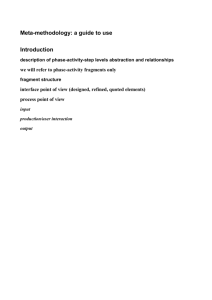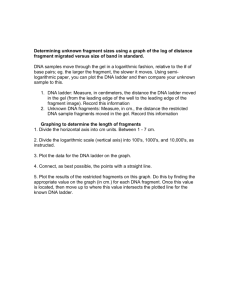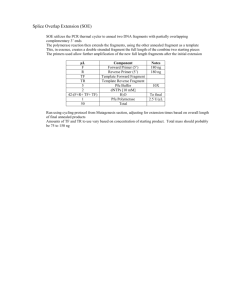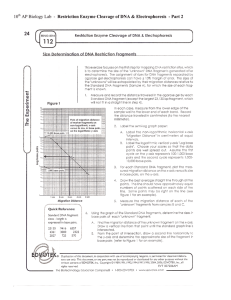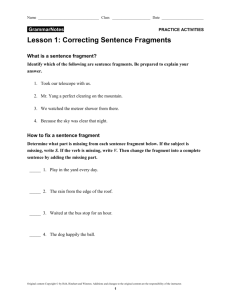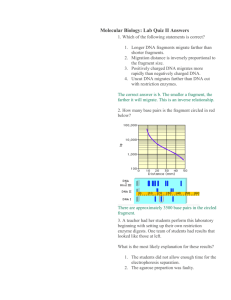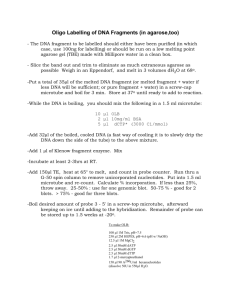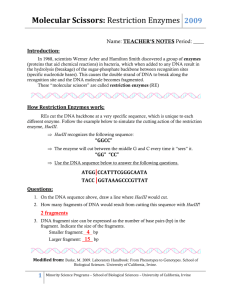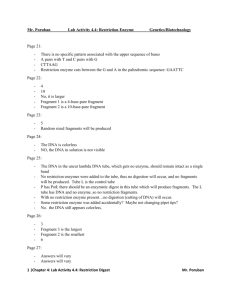DNA Fingerprinting: Student Manual & Lab Exercise
advertisement
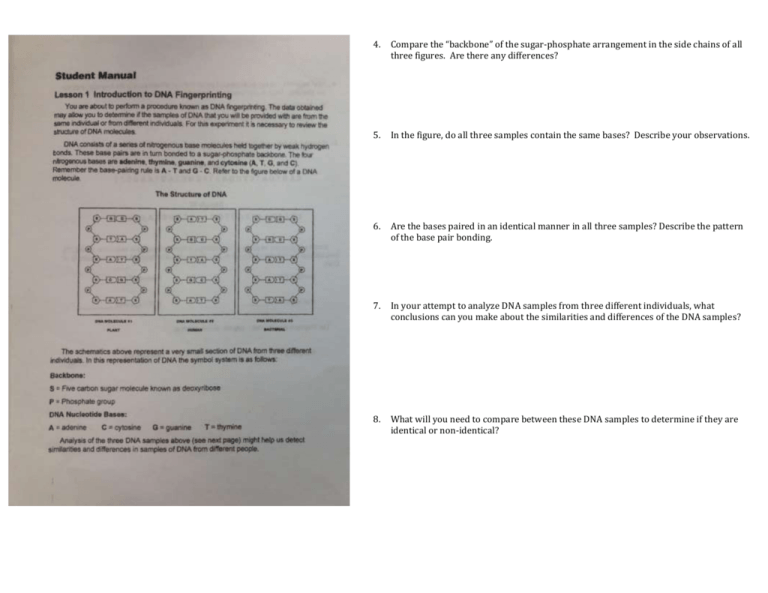
4. Compare the “backbone” of the sugar-phosphate arrangement in the side chains of all three figures. Are there any differences? 5. In the figure, do all three samples contain the same bases? Describe your observations. 6. Are the bases paired in an identical manner in all three samples? Describe the pattern of the base pair bonding. 7. In your attempt to analyze DNA samples from three different individuals, what conclusions can you make about the similarities and differences of the DNA samples? 8. What will you need to compare between these DNA samples to determine if they are identical or non-identical? 4. 5. DNA fragment size can be expressed as the number of base pairs in the fragment. Indicate the size of the fragments [mention any discrepancy you may detect] a. The smaller fragment it ____________________________ base pairs (bp) b. What is the length of the longer fragment? Consider the two samples of DNA shown below—single strands are shown for simplicity: Sample #1 CAGTGATCTCGAATTCGCTAGTAACGTT Sample #2 TCATGAATTCCTGGAATCAGCAAATGCA If both samples are treated with restriction enzyme [recognition sequence GAATTC] then indicate the number of fragments and the size of each fragment from each sample of DNA. Sample #1 Sample #2 # of fragments:____________ # of fragmanets:______________ List fragment size in order: Largest ------------ smallest Sample #1 Sample #2
